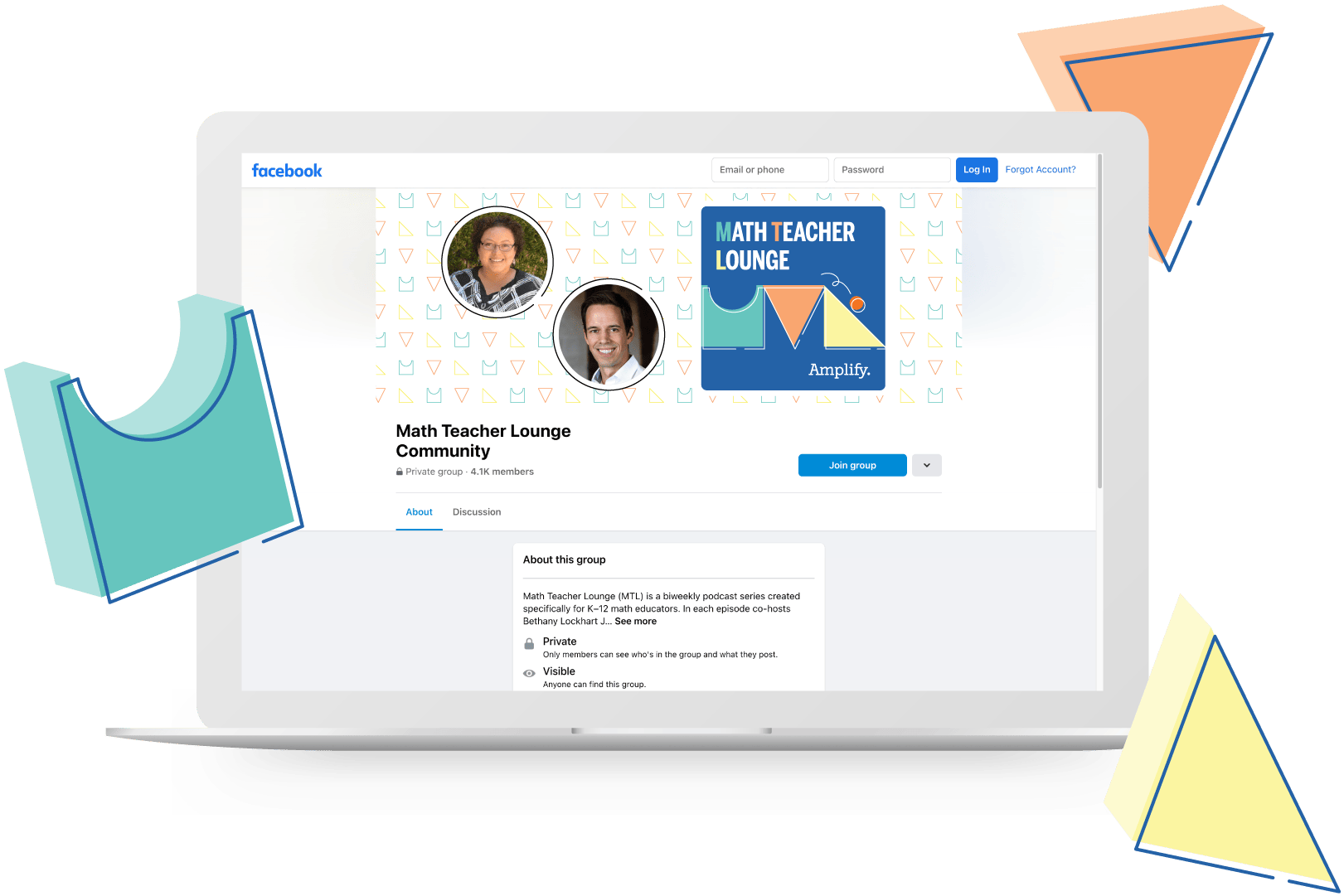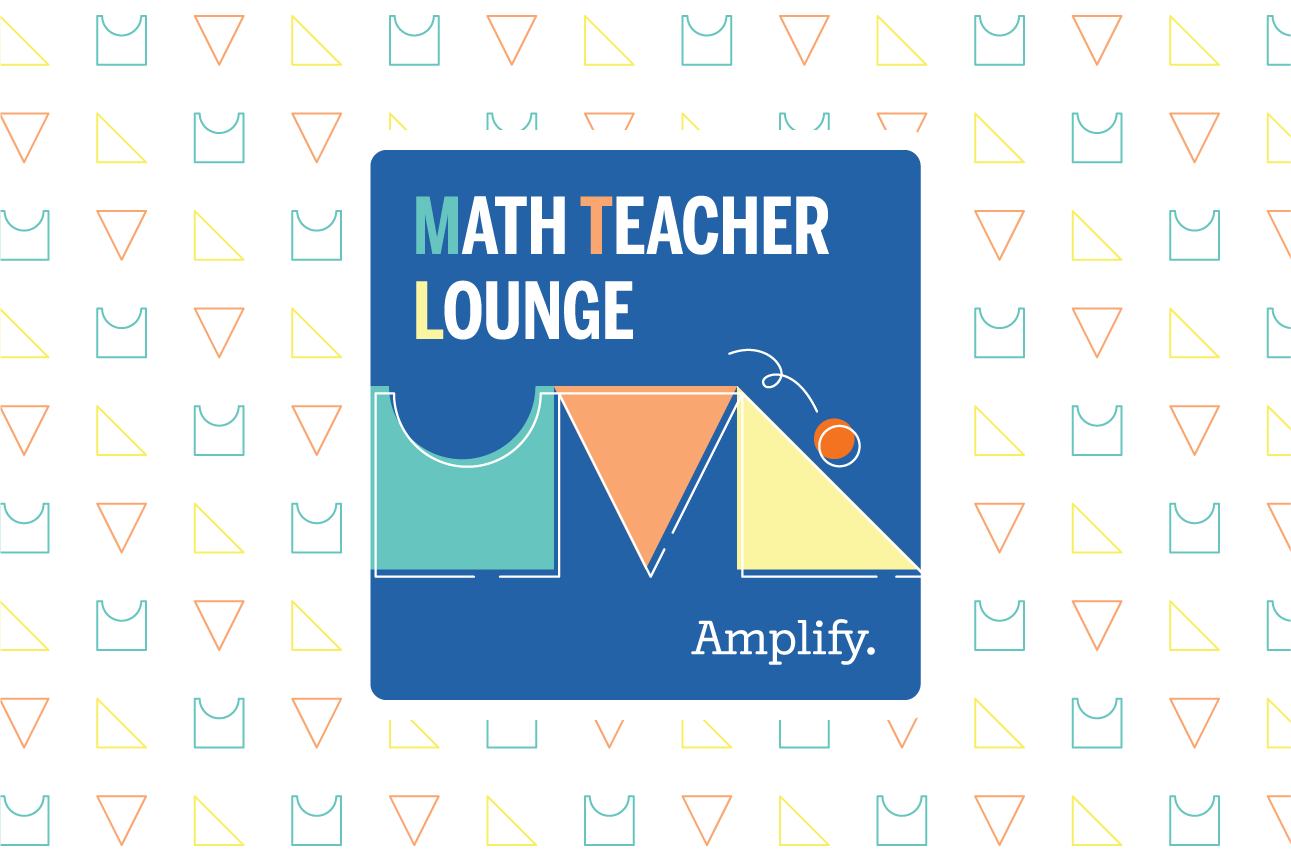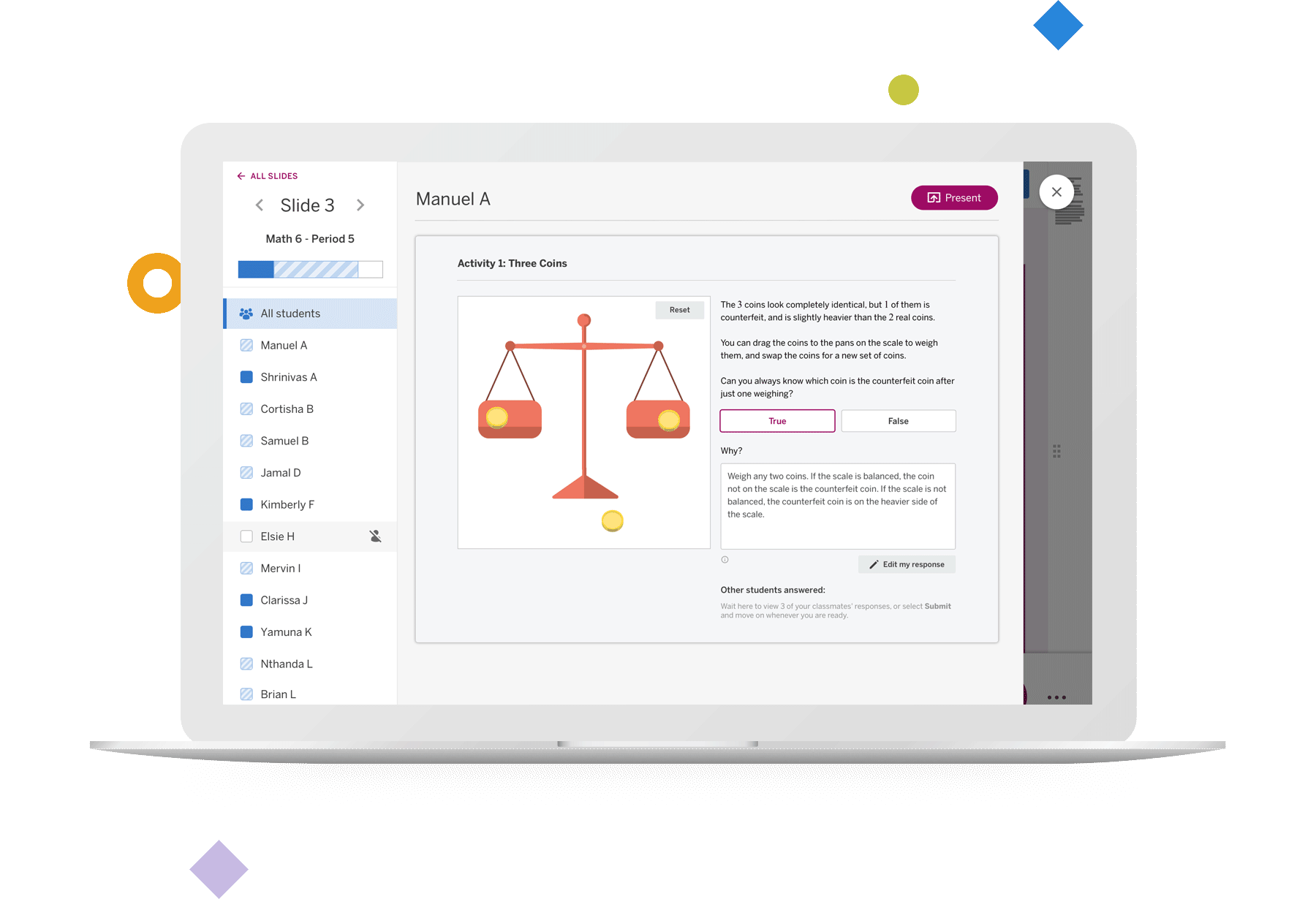
Artificial intelligence seems to be everywhere these days. We use it when we ask Alexa or Siri for the morning weather report. We use it when GPS tells us how to best avoid traffic. We use it when we chill at the end of the day with a recommendation from Netflix.┬Ā
But what about during the dayŌĆöand specifically, at school? Even more specifically, can AI be leveraged to enhance the math classroom?┬Ā
ŌĆ£While AI is an amazing tool, youŌĆÖve really got to make sure that you are focusing in on your expertise as well,ŌĆØ says veteran math educator and STEM instructional coach Kristen Moore, ŌĆ£And saying, ŌĆśHow can I use this to make something better?ŌĆÖ and not just, ŌĆśHow can I use this to make something?’ŌĆØ┬Ā
In this post, weŌĆÖll talk about the current state of AI in math education, and how it can support educators in making math better. (SPOILER: ItŌĆÖs not going to ▓Ō┤Ū│▄!)╠²
First, some STEM learning for us: What is artificial intelligence?┬Ā
Artificial intelligence, or AI, refers to the development of computer systems able to perform tasks that typically require human intelligence.┬Ā
It involves creating algorithms and systems that enable computers to learn from data, adapt to new situations, and make decisions or predictions.
AI aims to mimic human cognitive functions such as understanding language, recognizing patterns, solving problems, and making decisions. It encompasses a range of techniques and technologies, including machine learning, neural networks, natural language processing, and robotics.
The term “artificial intelligence” was introduced in 1956.┬Ā The availability of vast amounts of data and advancements in computer power in the 2010s led to additional breakthroughs. And with the proliferation of smartphones, smart devices, and the internet, AI technologies began to work their way into our homes, cars, pockets, and everyday lives.
WhatŌĆÖs the state of AI in education?┬Ā
AI is already commonplace in schools and classrooms. Here are just a few examples:
- Adaptive learning: This software uses AI algorithms to adjust the difficulty and content of lessons based on a student’s performance, helping students remain engaged and challenged at their optimal level.
- Assistive technologies: AI helps students with disabilities by providing assistive technologies like text-to-speech and speech-to-text tools, making educational content more accessible.
- Plagiarism detection: These tools use AI algorithms to identify instances of copied or unoriginal content in students’ assignments, essays, and projects.┬Ā
- Data analysis for teachers: AI analyzes data from student assessments to identify trends and insights, helping teachers make informed decisions about instructional strategies. It can also predict students’ performance trends, helping teachers identify at-risk students early and intervene to provide additional support.
- Grammar, spelling, and style checkers: AI can provide real-time feedback to students (and teachers!) on their writing work.
Embracing AI technology in your math classroom
While AI is not here to replace teachers, it is here to stay. And experts say itŌĆÖs only going to become more commonplace. But despite how common AI is alreadyŌĆöboth outside and inside schoolŌĆönot all teachers are familiar with its numerous applications and potential. Now is a great time for educators to start exploring its uses and get ahead of the curve.
Here are a few easy entry points for math teachers.┬Ā
ChatGPT: A common AI tool, ChatGPT is designed to understand and generate human-like text based on the input it receives. ItŌĆÖs trained on a wide range of internet text, which enables it to generate responses to a vast array of prompts and questions.┬Ā
Most students have likely experimented with ChatGPT, while teachersŌĆöthough aware of itŌĆöare less likely to use it. ChatGPT has highly practical applications for both groups, thoughŌĆöincluding in the math (and science) classroom.┬Ā
It can, for example, help teachers plan interesting, relevant math lessons for their students. Kristen Moore, who discusses this topic on Math Teacher Lounge, that math teachers use ChatGPT to:
- Connect topics to student interests and vice-versa. (Teachers can ask ChatGPT for real-life applications of polynomials and select those that might pique student interest, or ask about math applications derived from studentsŌĆÖ hobbies and pursuits.)┬Ā
- Generate word problems (including step-by-step solutions), lessons, projects and rubrics, and more.
Toward the (near) future
As AI advances, it will continue to revolutionize education. Here are a few time-saving ways that educators can look forward to using it in their classrooms.
- AI tutors: AI-powered virtual tutors will help math students with homework questions and provide explanations for various concepts. These tutors can be available at home 24/7, allowing students to seek an AI homework helper whenever they need it.
- Automatic graders: Some AI tools can automatically grade math work, including multiple-choice and short-answer assignments. These tutors can be available at home 24/7 in any household with internet access, allowing students to seek more personalized instruction.
- Personalized learning paths: These AI-powered platforms will work particularly well for math students by adapting to each student’s skill level and pace, offering tailored exercises and challenges that cater to their strengths and identify areas of improvement. They will analyze students’ performance and adjust the difficulty of content, ensuring that students get targeted support and opportunities to progress.
More to explore
To dive deeper into AI in math educationŌĆöand get rolling with AI in your classroomŌĆöcheck out this two-episode mini-series on our Math Teacher Lounge podcast focused on just that:┬Ā
- Season 5, Episode 7: Discerning the role of AI in education with former teacher, current education technology entrepreneur, and general partner at Reach Capital Jennifer Carolan, who has a lot to share about how AI can partner with educators to foster social learning opportunities.
- Season 5, Episode 8: Utilizing AI as a teaching tool with educator Kristen Moore, who discusses how she uses ChatGPT to revolutionize student learning and streamline lesson planning.
“I’m a believer that learning is inherently social,” says Carolan, who is quick to emphasize how technology can enhance that quality, not replace it. The same can be said for the role teachers play in the classroomŌĆöa role technology can support, but never take away. To learn more about this topic (and discuss it with your fellow educators!), head to our Math Teacher Lounge community!╠²



